Rome – Day 5 and Return
Thursday, 20-Apr-2023
Tags: Travel
Eileen really wanted to get to the catacombs and walk a little along the Appian Way southeast of Rome, and found a EnjoyRome small group tour using the GetYourGuide app. We had an 8-person minibus with a couple and an 8-year old from Greece, a women from the Philippines, a wonderful women guide, and a driver, and were picked up at a bus stop near the Cavour Metro stop.
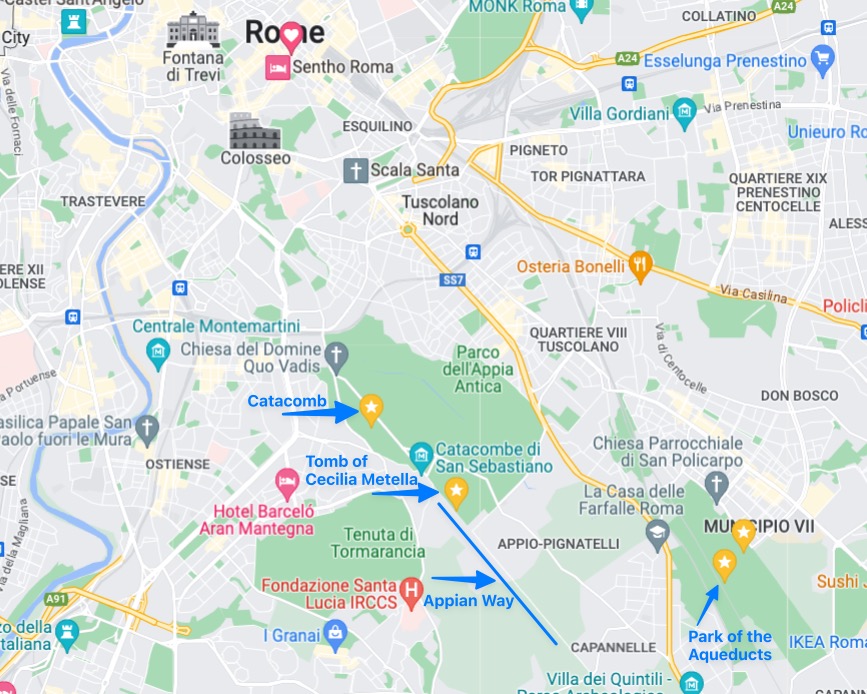
The first stop was the Catacombs of St. Callixtus (Callisto), along the Appian Way. The catacombs were the official cemetery of the Church of Rome in the 3rd century CE. Around half a million Christians were buried there, among them many martyrs and 16 popes. They are named after the deacon St. Callixtus who, at the beginning of the 3rd century CE, was assigned by Pope Zephyrinus to the administration of the cemetery. By the mid-4th century, Christians could be buried inside the city, but the catacombs continued to function until the beginning of the fifth century. Since 1930, the catacombs have been entrusted to the custody of the Salesians of Don Bosco. No pictures were allowed during our 40-minute tour. We walked through narrow volcanic tuff tunnels with slots where people were placed, and looked at side rooms of families and of Popes, which were bigger.
Entrance to the Catacombs. Tours in different languages.
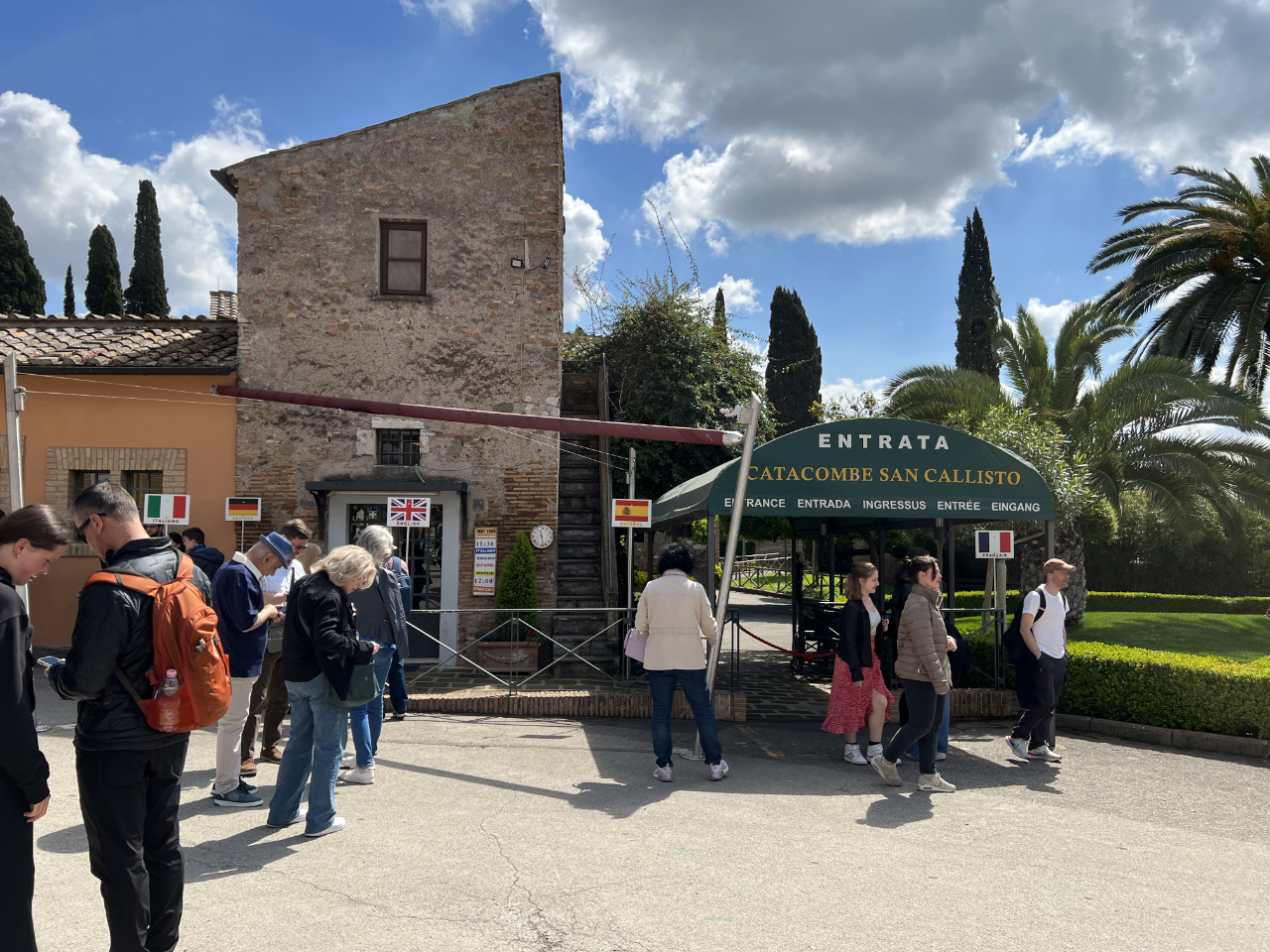
Picture of a typical tunnel.
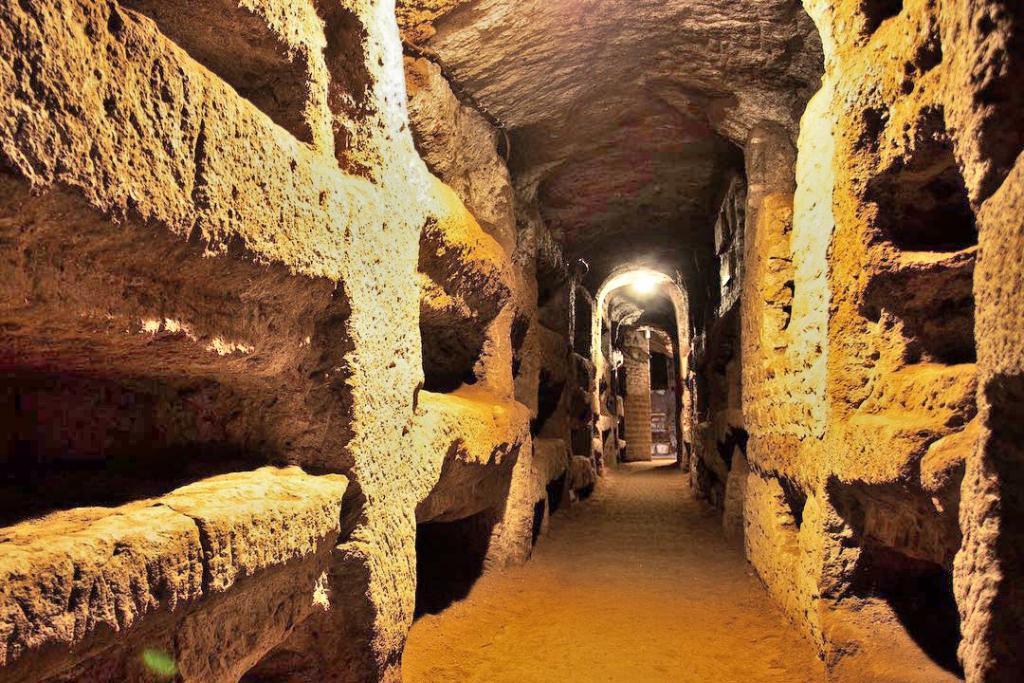
from: https://colosseumrometickets.com
We then got into the mini-bus and drove a mile to our next stop: the Tomb of Cecilia Metella. The funerary monument, (27 – 10 BCE) is one of the largest drum mausoleums in antiquity. In the Middle Ages, the Caetani family designed and constructed the Castrum Caetani, a fortified village with enclosure walls, incorporating the tomb of Cecilia Metella and part of the Appian Way, effectively barricading the Appian Way.
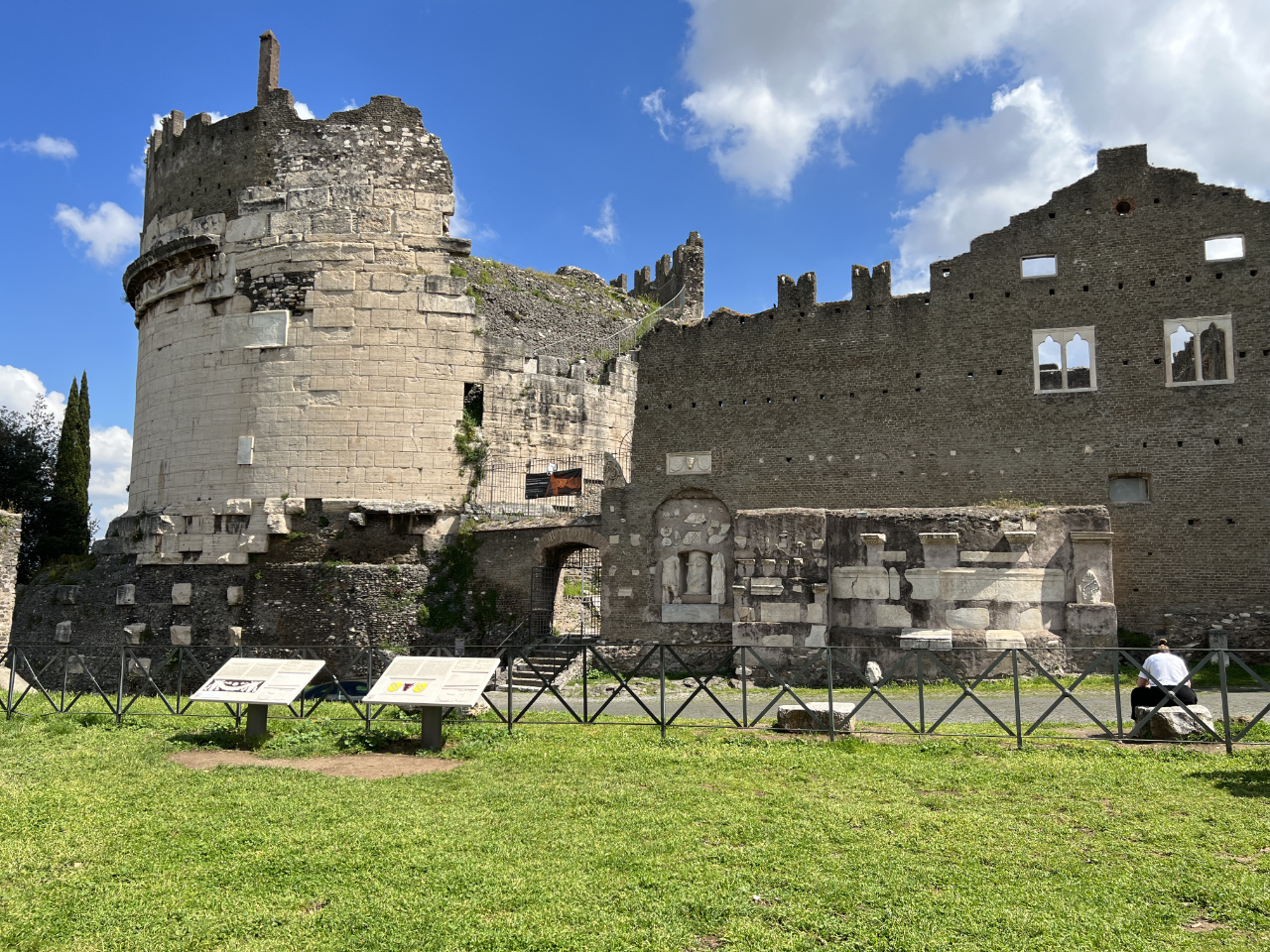
Across the way, there is a Cistercian Gothic church built in the beginning of the 14th century, dedicated to St. Nicholas. The architectural choices must have been influenced by Pope Boniface VIII, born Benedetto Caetani, who spent a long period in Paris as a cardinal.
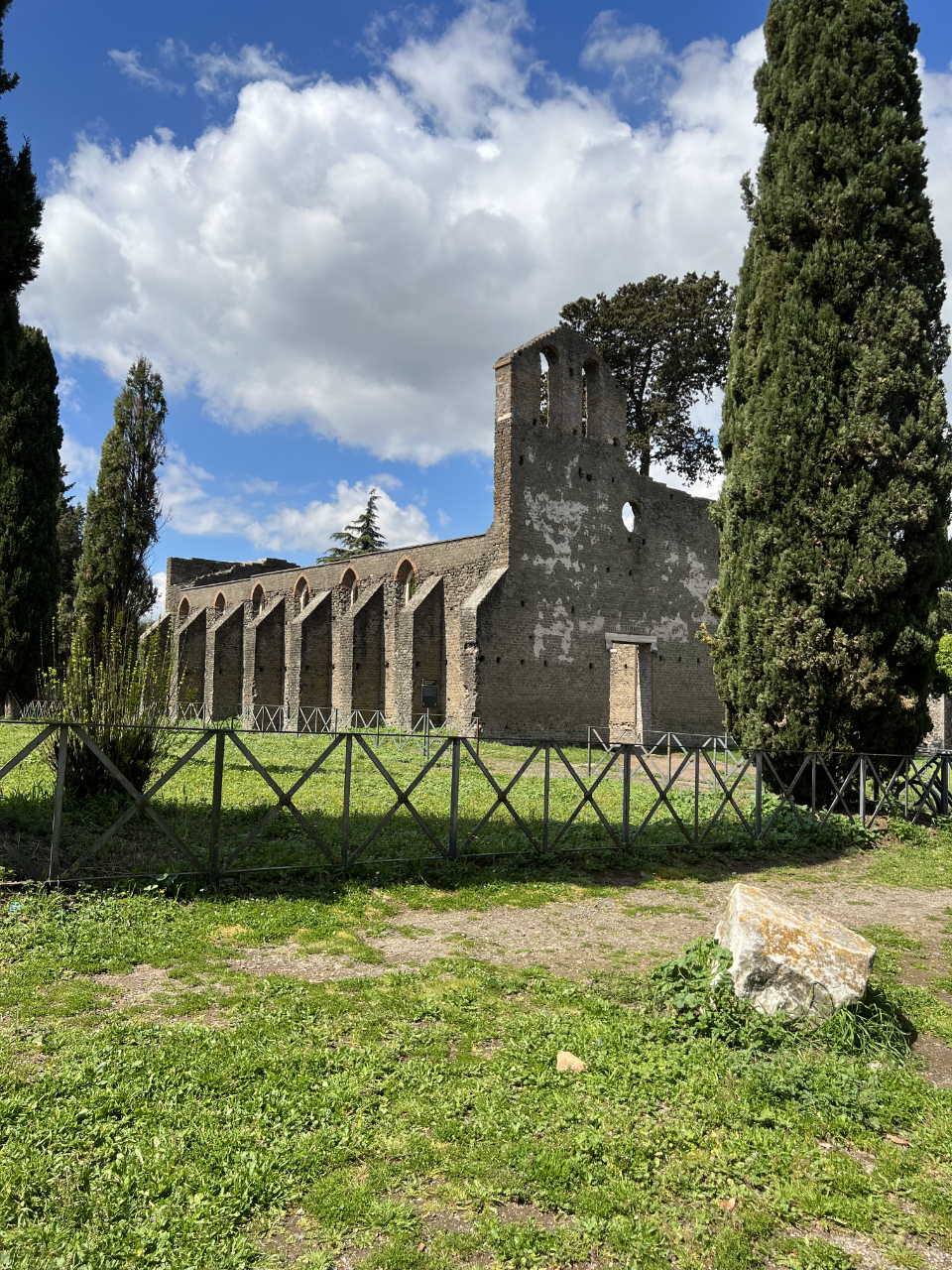
We walked along the Appian Way, chatting and enjoying the weather. The Via Appia Antica, or Roman Appian Way, is one of the oldest roads of Rome and served as an important access road into the city. The cobbled road was named after consul Appius Claudius Caecus who commissioned its construction in 312 BCE. Part of the road (starting at the Cecilia Metella funerary monument) still has the old paving stones.
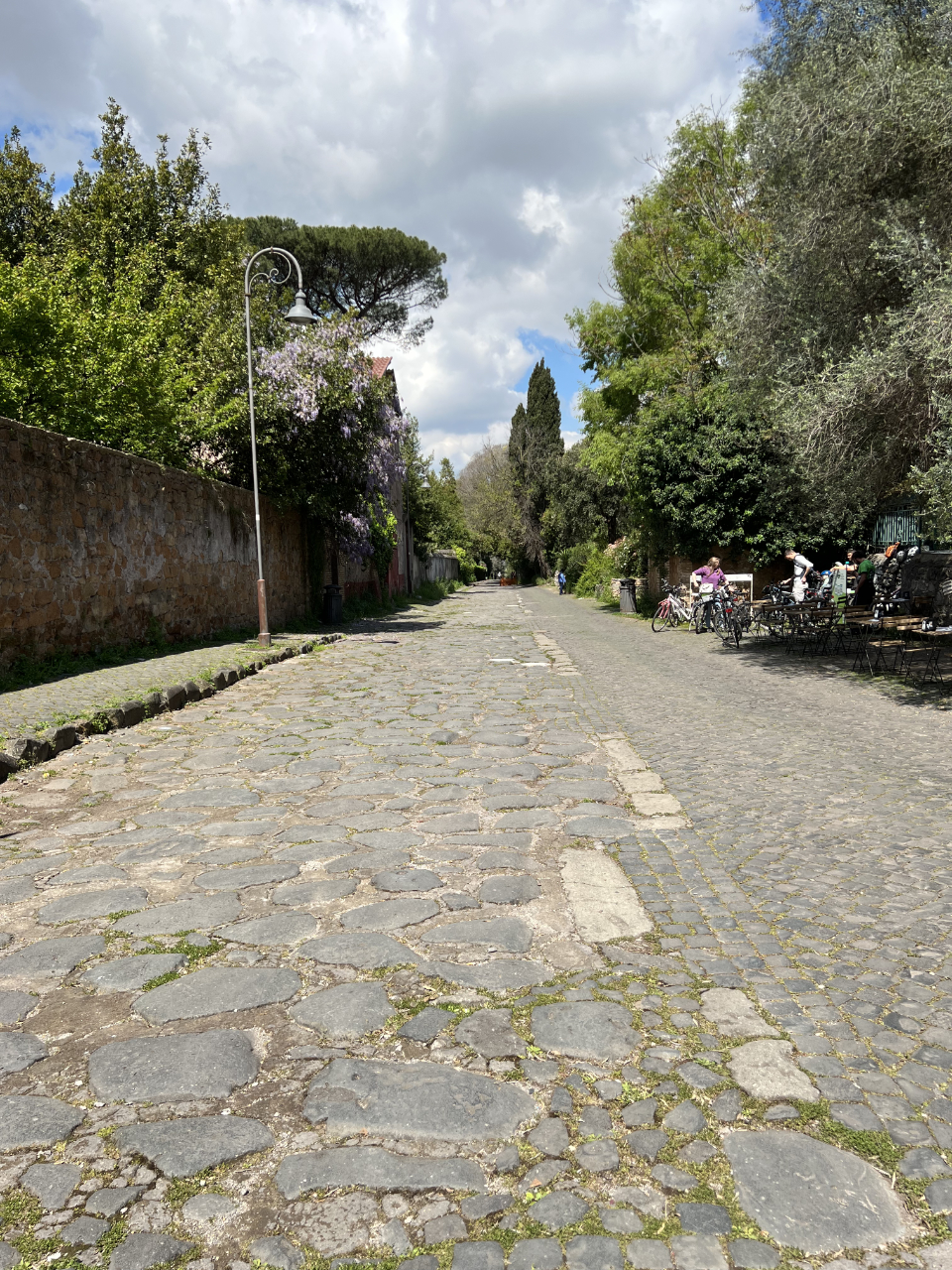
We then got in the mini-bus and drove 3 miles to the the Park of the Aqueducts.
In the park are the massive remains of a number of ancient aqueducts that were built during the Roman Empire. The park is about 600 acres. In ancient times, it was a real crossroads for the water supply heading to the urban area. They were built using overlapping arches. The water ran in a groove at the top, and the system worked using the force of gravity. We parked near the Claudio Aqueduct and walked along a path, viewed the structure, and stopped at a pond.
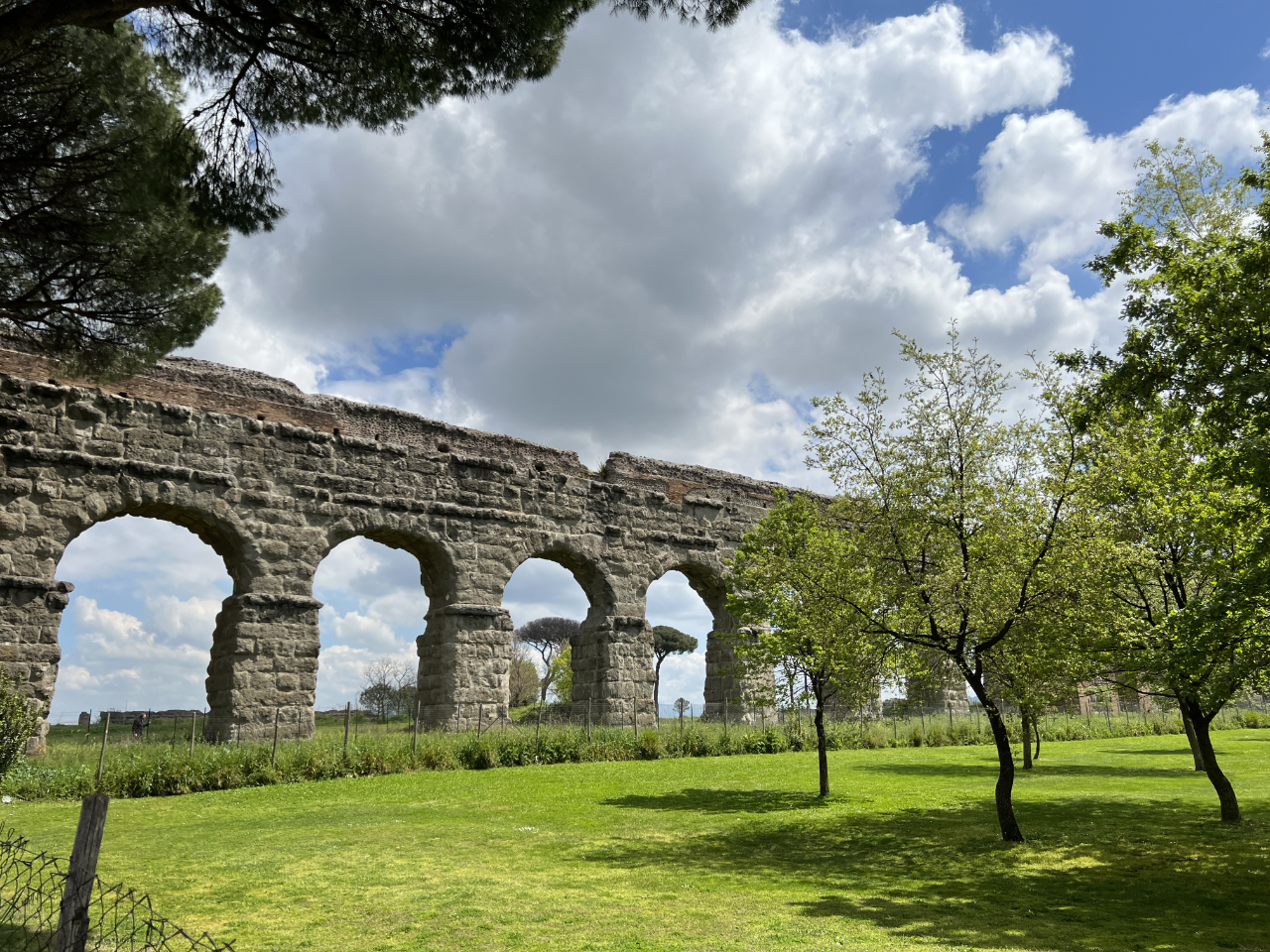
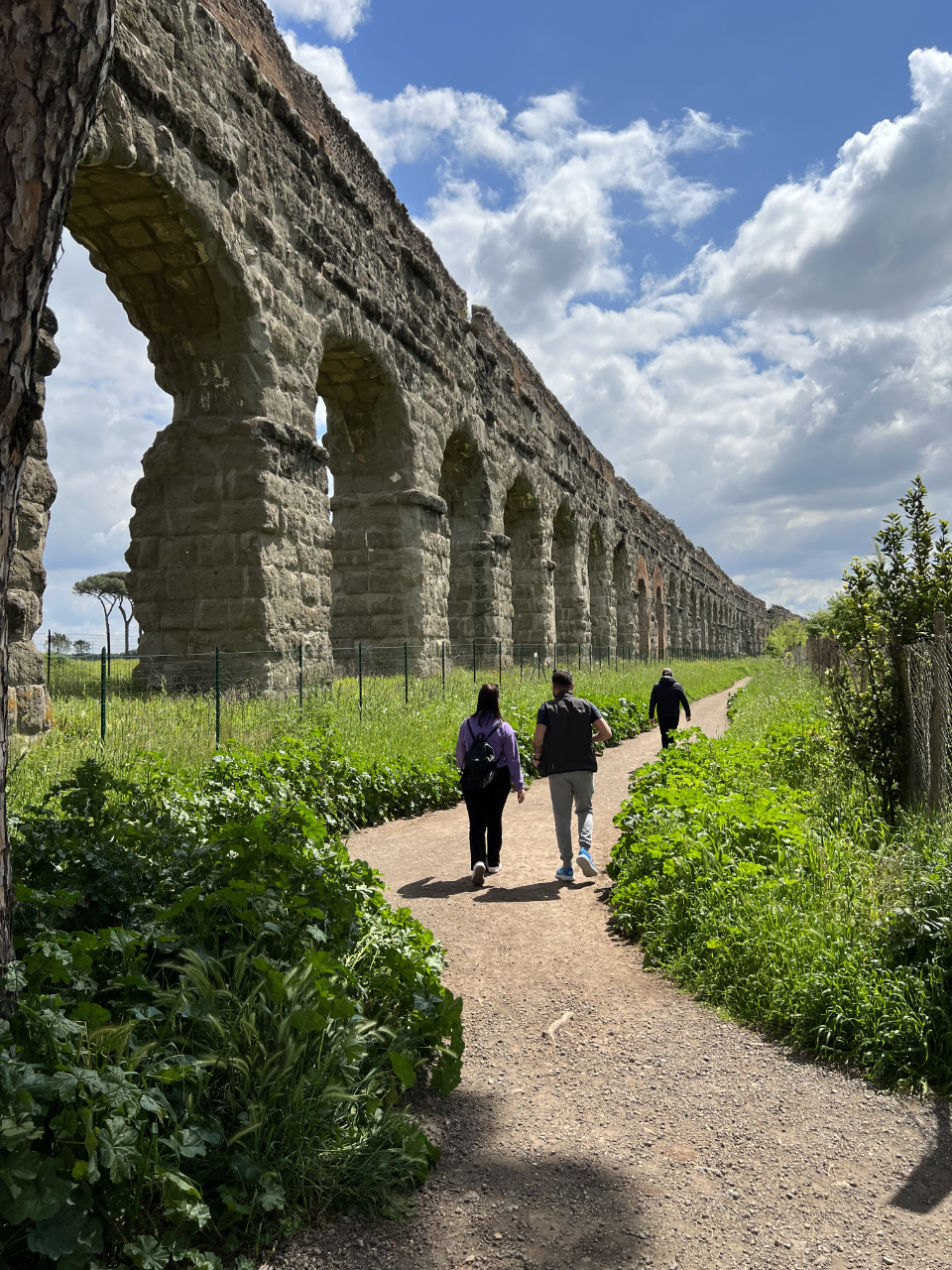
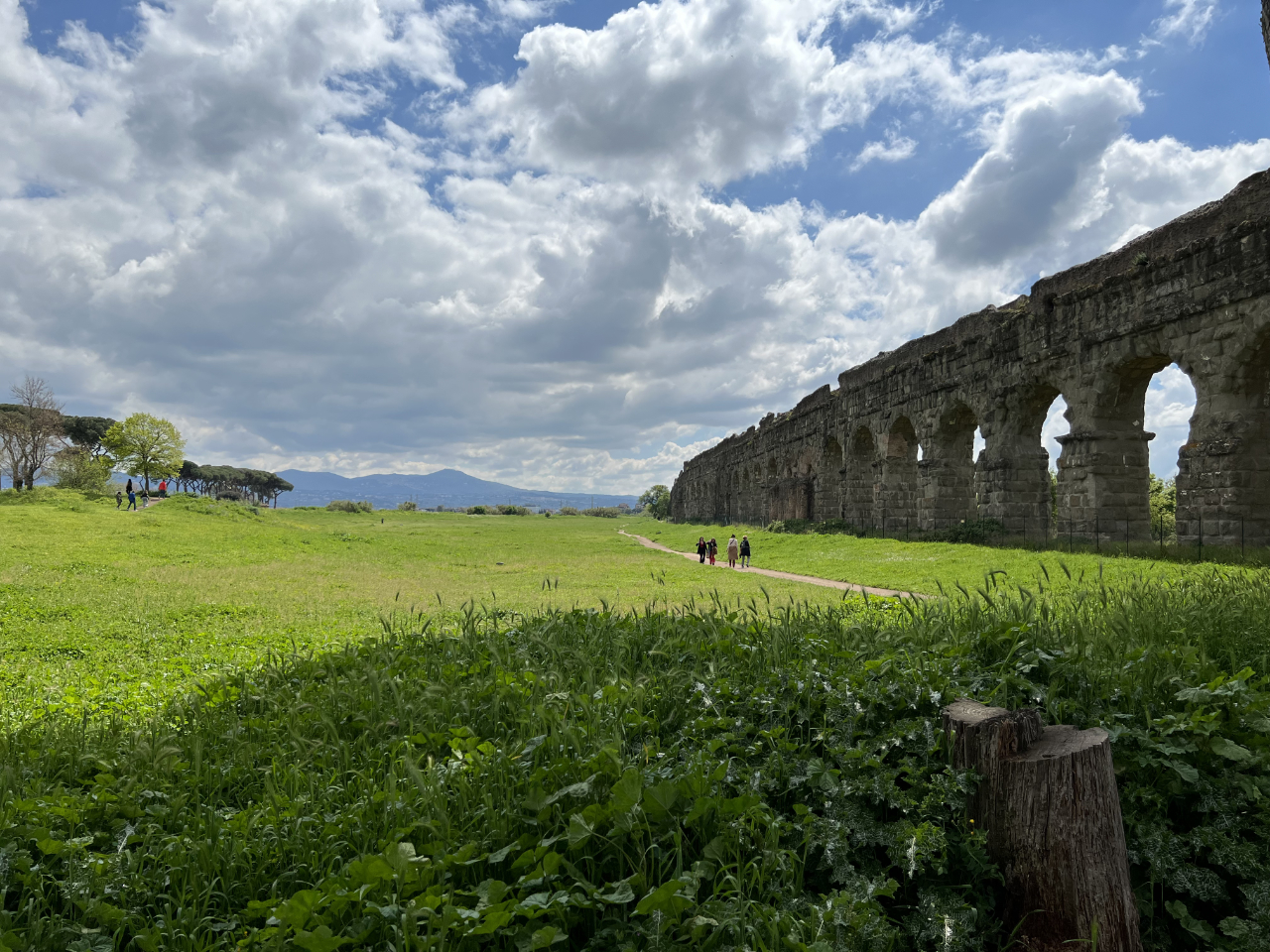
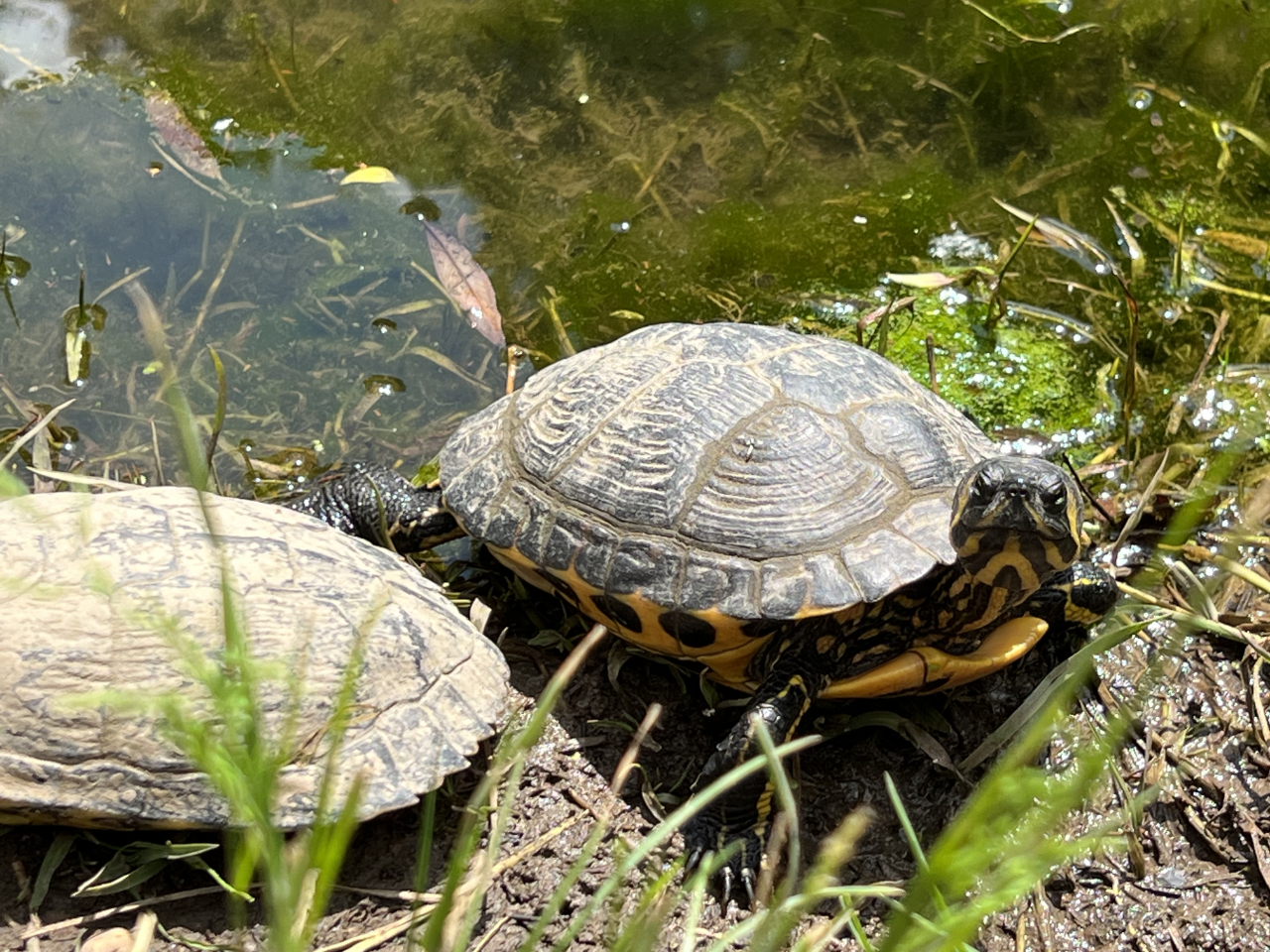
We got back in the mini-bus and headed back to Via Cavour.
After getting back to the hotel, Larry and Eileen both walked to Roma Termini (train station) to get Leonardo Express tickets for the next day, and to check out the new Mercato Centrale at the far end of the complex, a new venture meant to re-vitalize the area. Similar to other markets, there are speciality mini-restaurants and markets. We shared the famous fried artichoke "jewish style" – Carciofi alla Giudia, not having time to get to the Synagogue and restaurant area of Rome this time around
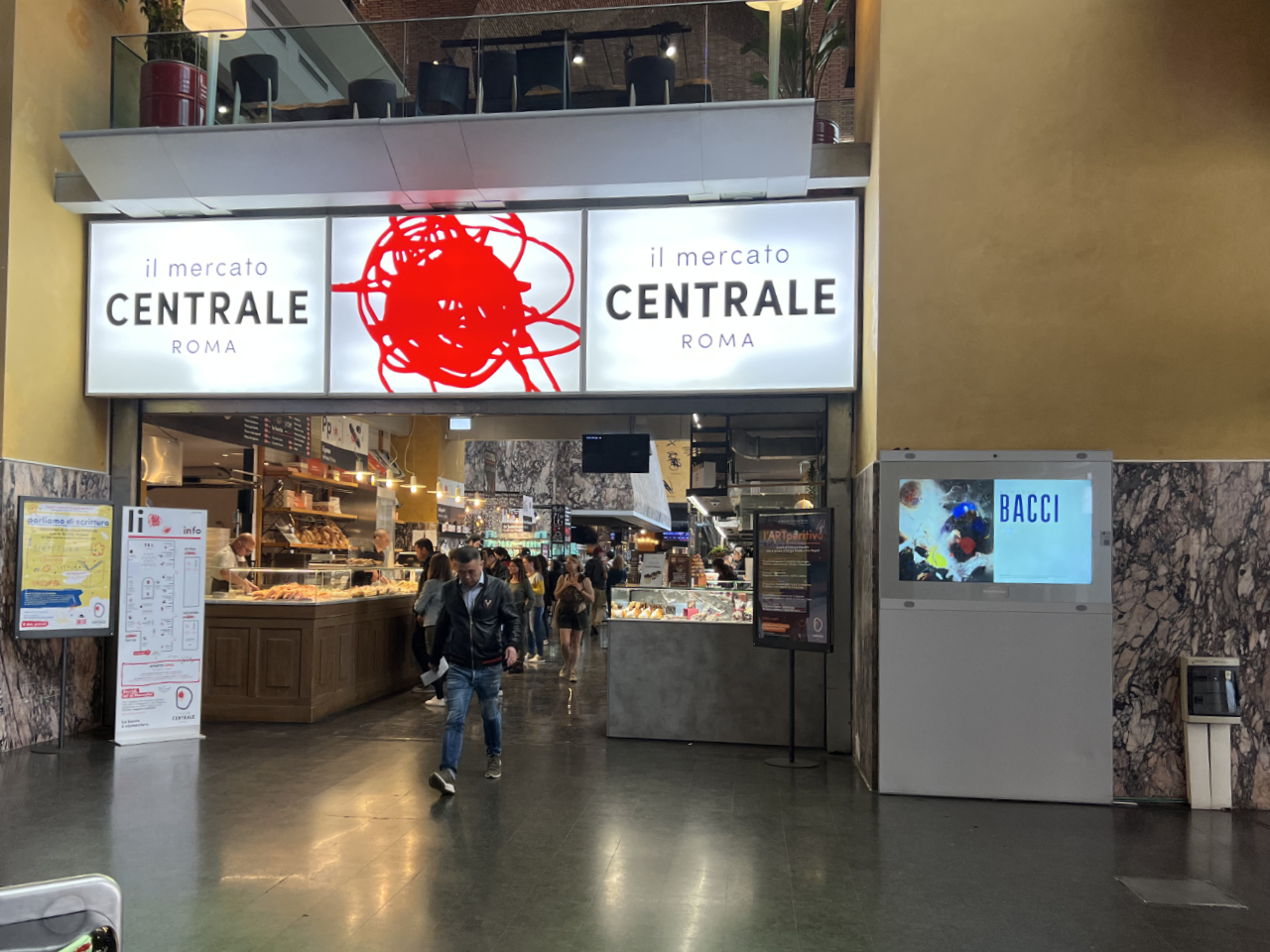
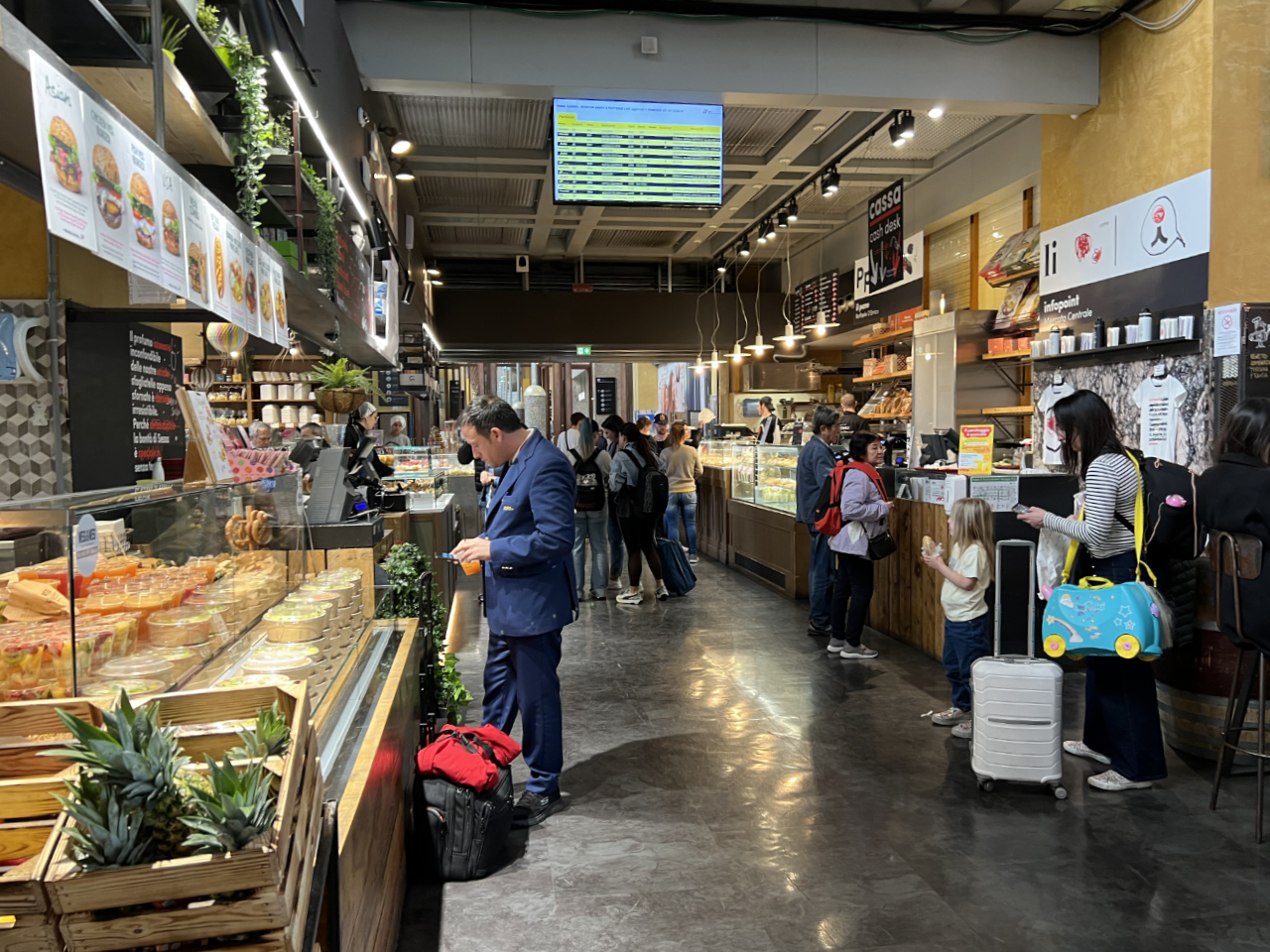
We packed, went to bed, got up early, took the Express to the airport. We ended up being quite early for our Aer Lingus flight, which was managed by a third party, and didn't open until 8:45 am for a 10:20 am flight. We were in front, with a hundred or so people behind us when it finally opened. We headed to a AmEx-partner club for breakfast, and had an uneventful flight on time to Dublin, in spite of the fact there was supposed to be a scheduled ground crew strike that day.
Once at the Dublin airport, we had 3 hours, so we went to a Priority Pass lounge for a meal. About an hour before boarding, we went through the pre-clearance area for travel to the US – Dublin and a few airports in Canada have this – and thus would not have to go through immigration on arrival, landing at Logan Terminal C. Home at last!
Links:
--
Larry and Eileen Samberg













